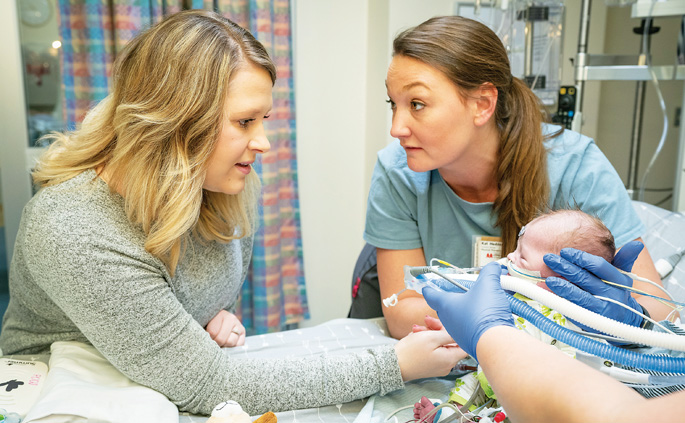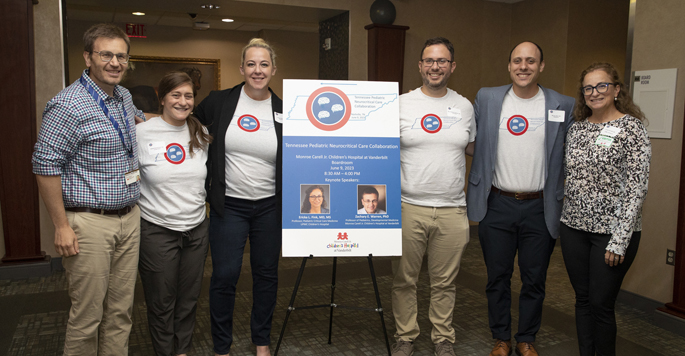
performs an early mobility intervention in the pediatric intensive care unit. (photo by Joe Howell)
by Jessica Pasley
For years Kristina Betters, MD, assistant professor of Pediatric Critical Care at Monroe Carell Jr. Children’s Hospital at Vanderbilt, has been aware of the value of getting patients in the intensive care unit (ICU) moving during their critical illnesses to prevent muscle breakdown, weakness and delirium.
A well-studied intervention in the adult population, early mobility implementation in pediatrics is lacking, she said.
Soon after starting at Vanderbilt in 2017, Betters and her team developed a multidisciplinary committee and created a pediatric early mobility protocol, which was initiated in 2018.
“We have changed the ICU culture,” said Betters. “Previously, the thought was that kids are too sick to initiate this effort. Longtime ICU staff were hesitant at first, but now there are far fewer barriers to early mobility. People are actually asking for the intervention.
“Anecdotally, medical staff members are seeing their patients improve. Patients are less sedated and more interactive, and families are also engaging more with their children. Oftentimes parents feel helpless in the ICU, and this is one way they can help their child get better.”
As the initiative is nearing the one-year mark, Betters and her team are beginning to collect data on hundreds of patient outcomes.
“This was a huge team effort that required commitment from our physical, occupational, speech and respiratory therapists, nurses, child life specialists, ECMO team, nurse practitioners, physician assistants and physicians without additional staffing,” she said. “Although it increased the work load, everyone involved is dedicated because they want to provide better care, and they are seeing the positive results.”
Although the Society for Critical Care Medicine recommended early mobility as a quality improvement measure, few pediatric ICUs have incorporated the practice, she said, and only a few pediatric feasibility studies have been published supporting the initiative and none reporting outcomes.
She’s working on changing that.
“My goal is to implement this as the standard of care for pediatric intensive care units worldwide,” said Betters. “When there are research-proven outcomes, the priority is much higher.”
Betters said since beginning the early mobility practice in Children’s Hospital ICU settings, each patient older than 1 on the early mobility protocol now receives a speech language pathology consult. This led to additional changes within the units allowing a communication component to be paired with the early mobility initiative to allow patients to use laminated boards and iPads to convey pain, hunger, frustration and more.
The early mobility team is in the process of gathering data from surveys and individual patient outcomes with the goal of presenting findings at a conference in the fall.
“Our mortality rates are very low,” she said of the ICU. “My question is, ‘how do we save these children and improve their quality of life after they leave the ICU?’ I believe early mobility will be a big part of that equation.”















